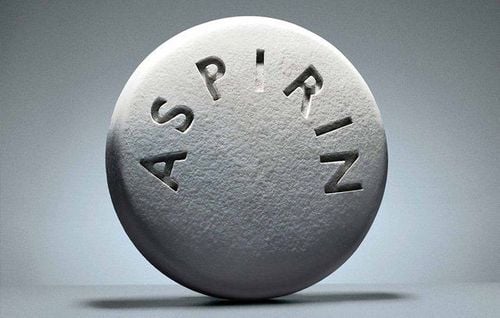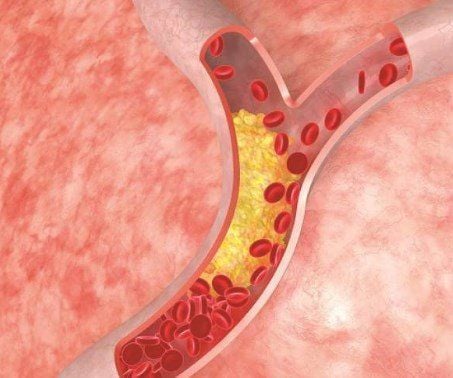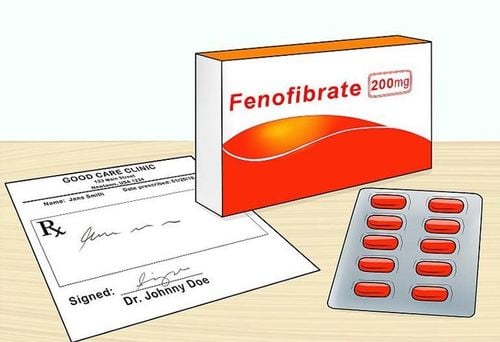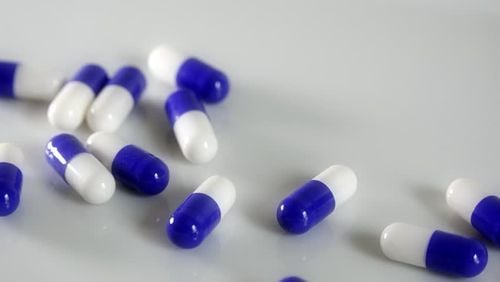This is an automatically translated article.
Amefibrex 300 is prescribed by doctors for use in cases to support the control of dyslipidemia. To ensure the effectiveness of use when using Amefibrex 300, users need to follow the instructions of their doctor, and refer to the following article for more information about the use of Amefibrex 300.
1. What are the effects of Amefibrex 300?
Amefibrex 300 has the main active ingredient: Fenofibrate (300 mg) and excipients: Lactose Monohydrate; Pregelatinized starch; Sodium Lauryl Sulfate; Crospovidone; Magnesium Stearate.
Amefibrex 300 is prepared in tablet form, packed in a box of 5 blisters x 4 tablets, a box of 5 blisters x 6 tablets and a box of 4 blisters x 7 tablets.
What disease does Amefibrex 300 treat?
Amefibrex 300 reduces low-density lipoprotein cholesterol (LDL-Cholesterol), and Total Triglyceride or Apolipoprotein B. Helps increase High-density lipoprotein cholesterol (HDL-Cholesterol) to control disorders in blood lipids: type: type lla; Iib; III; IV; and V. In combination with the diet . Contraindications:
Patients with hypersensitivity to Fenofibrate, or to any of the ingredients and excipients of the drug. Patients with severe liver failure (including biliary cirrhosis). People with severe kidney failure. People are known to have allergic reactions to light during treatment with Fibrates or with Ketoprofen. Gallbladder disease. Acute pancreatitis, and chronic except for acute pancreatitis due to strong hypertriglyceridemia. Women who are pregnant and breastfeeding. Children under 10 years old.
2. Usage of Amefibrex 300
2.1. How to take the drug Amefibrex 300 Take the drug orally in combination with a diet. Take the medicine with the main meal. The drug is intended for use in adults, and children over 10 years of age. However, in order to maximize the effectiveness of the drug and limit the risks, users need to carefully read the instructions for use before using. 2.2. Dosage of the drug Amefibrex 300 Treatment of the drug Amefibrex 300 with the main ingredient fenofibrate must necessarily be combined with a lipid-restricted diet. The medicine must be taken with a meal.
Adults: Take 300mg per day (1 300mg tablet, taken with a main meal or 3 times, 1 100mg tablet each time with meals). The first dose is usually 200mg a day (taken once or in 2 divided doses).
If total blood cholesterol is still higher than 4g/l, the dose can be increased to 300mg/day.
It is necessary to maintain the initial dose until blood cholesterol returns to normal; The daily dose can then be slightly reduced. Blood cholesterol should be checked every 3 months. If blood lipid parameters increase again, the dose must be increased to 300 mg per day.
Children under 10 years old: Careful research is needed to determine the exact cause of hyperlipidemia in children. May be trialled in combination with a strictly controlled diet for 3 months. The maximum recommended dose of Amefibrex 300 is 5 mg per kg per day.
Dealing with missed doses Usually medicines can be taken within 1 to 2 hours of the prescribed dose. Unless there is a very strict rule about the time of use, the medicine can be taken a few hours after forgetting. But if the time is too far from the time when it is necessary to drink, it is not advisable to take the supplement, which may be dangerous to the body. It is necessary to strictly adhere to or consult a doctor before making a decision.
Treatment of overdose No cases of overdose have been reported. There is no specific antidote. If an overdose of Amefibrex 300 is suspected, symptomatic treatment and appropriate supportive measures should be instituted as needed. Note that dialysis cannot remove Fenofibrate from the body.
3. Notes when using Amefibrex 300
The patient's liver and kidney function should be tested before starting Amefibrex 300. In patients taking anticoagulants: When starting Amefibrex 300, the anticoagulant dose should be reduced to only one one-third of the old dose, and adjust if necessary. More frequent monitoring of the amount of prothrombin in the blood is required. Adjust anticoagulant dose during, and 8 days after stopping fibrate. Hypothyroidism may be a factor that increases the likelihood of muscle side effects. Transaminases should be measured every 3 months, and during the first 12 months of dosing. Amefibrex 300 should be temporarily discontinued if SGPT (ALT) is more than 100 international units. Do not combine Amefibrex 300 with drugs that have hepatotoxic effects. Biliary complications are more likely to occur in patients with biliary cirrhosis or gallstones. If after several months of taking the drug (3 to 6 months) there is no significant change in blood lipids, then another (additional or different) therapy must be considered. Do not use 300mg tablets for children; Only use tablets of this strength for patients who need a daily dose of Amefibrex 300. Use in pregnant women, and nursing mothers
Pregnant women: Not recommended during pregnancy. Lactation: No data available. However, for safety reasons, it is not recommended for nursing mothers.
4. Side effects of the drug Amefibrex 300
Amefibrex 300 main ingredient Fenofibrate is well tolerated. However, undesirable effects still occur but are usually mild and transient or do not interfere with treatment:
Frequent: Gastrointestinal disturbances, gastrointestinal upset (abdominal pain, and nausea, or vomiting). , diarrhea, and flatulence). Infrequent: Pancreatitis, and thromboembolism, rash, or pruritus, urticaria and photosensitivity reactions. In some isolated cases (even after many months of use), photosensitive skin may occur, causing erythema, blistering, blistering, headache, fatigue, dizziness. Rarely: Increase in serum transaminases, or increase in serum creatinine and urea, mild decrease in hemoglobin and white blood cells, myalgia, or myositis, muscle cramps and weakness. Inform your doctor about any unwanted effects you may experience while using the drug.
5. Drug interactions Amefibrex 300
Co-administration of HMG CoA reductase inhibitors (eg, pravastatin, simvastatin, fluvastatin) and fibrates significantly increases the risk of muscle damage and acute pancreatitis.
Combining fibrates with ciclosporin increases the risk of muscle damage. Fenofibrate potentiates the effects of oral anticoagulants and thereby increases the risk of bleeding by displacing these drugs from plasma protein binding sites.
More frequent monitoring of prothrombin levels and dose adjustment of oral anticoagulants is required during fenofibrate therapy and 8 days after discontinuation.
Do not combine hepatotoxic drugs (MAO inhibitors, perhexiline maleate...) with fenofibrate.
6. How to store Amefibrex 300
The shelf life of the drug Amefibrex 300 is 36 months from the date of manufacture.
Store in a cool, dry place, the temperature does not exceed 30°C, in the original packaging and protect from light, avoid acidic environments.
Keep out of reach of children and pets.
Before use should carefully check the expiry date of the drug Amefibrex 300. Absolutely do not use after the expiry date printed on the package.
The above is important information about the drug Amefibrex 300, before using it, patients need to know the information so that the process of using the drug can achieve good results as well as minimize the effects on health.
Please dial HOTLINE for more information or register for an appointment HERE. Download MyVinmec app to make appointments faster and to manage your bookings easily.













